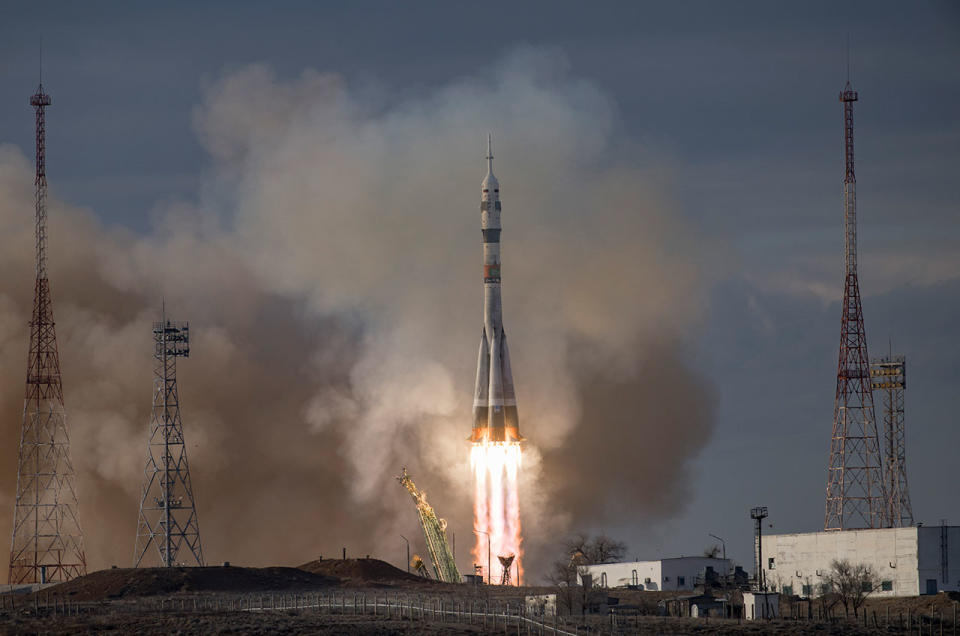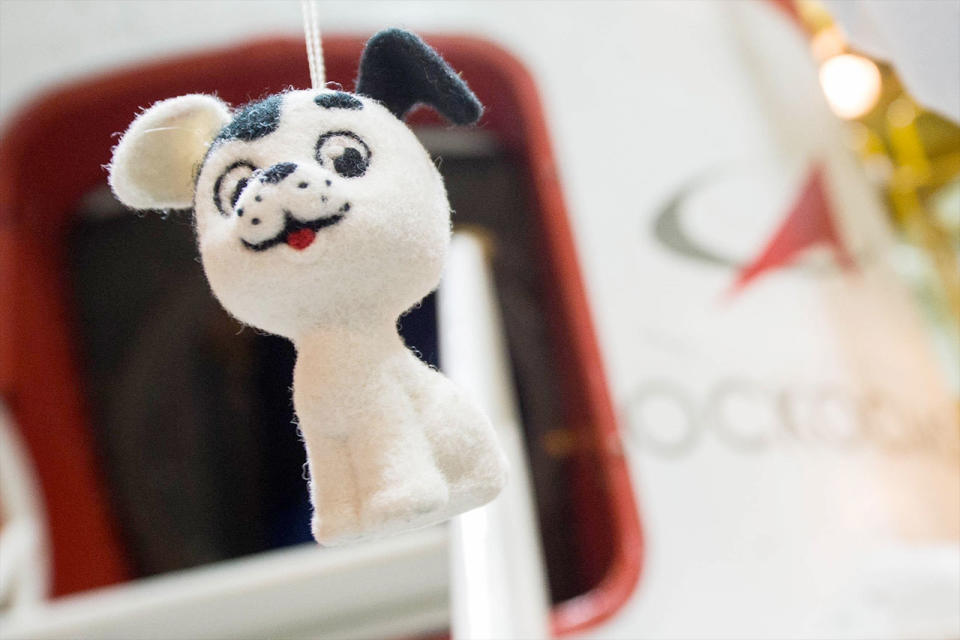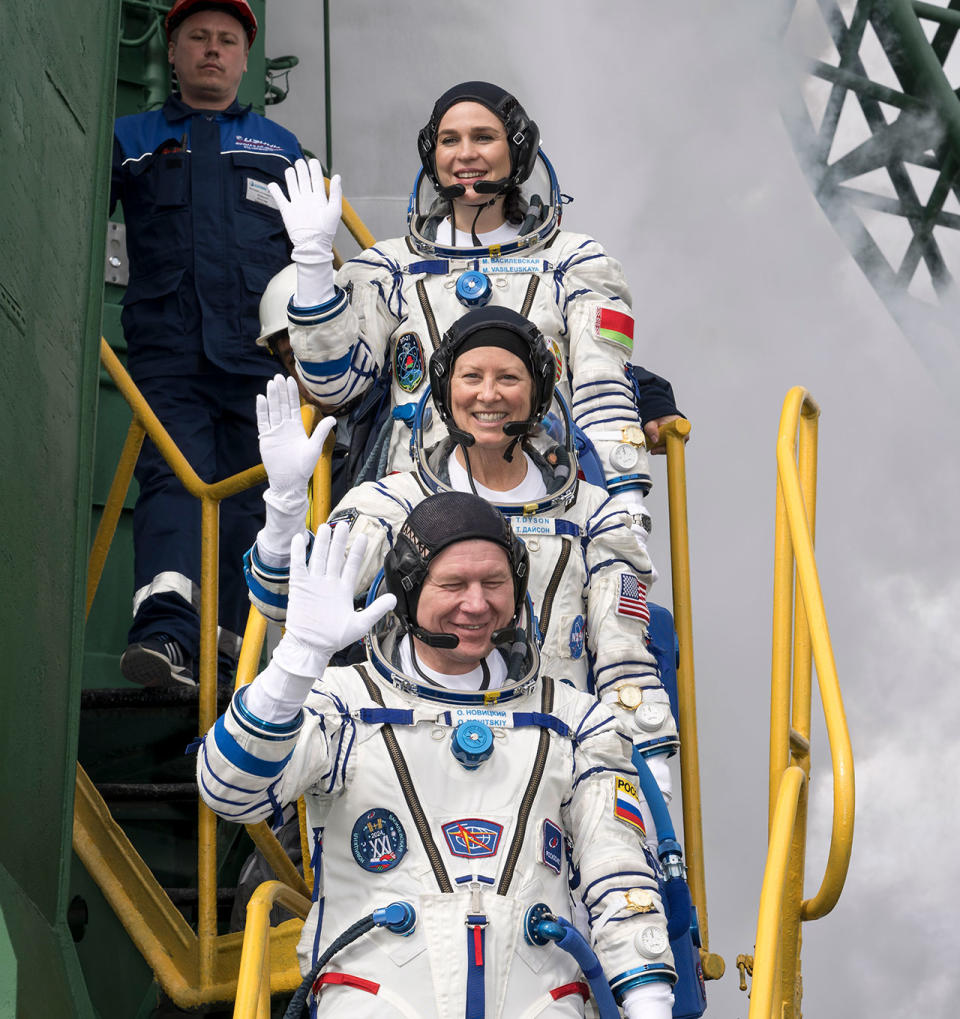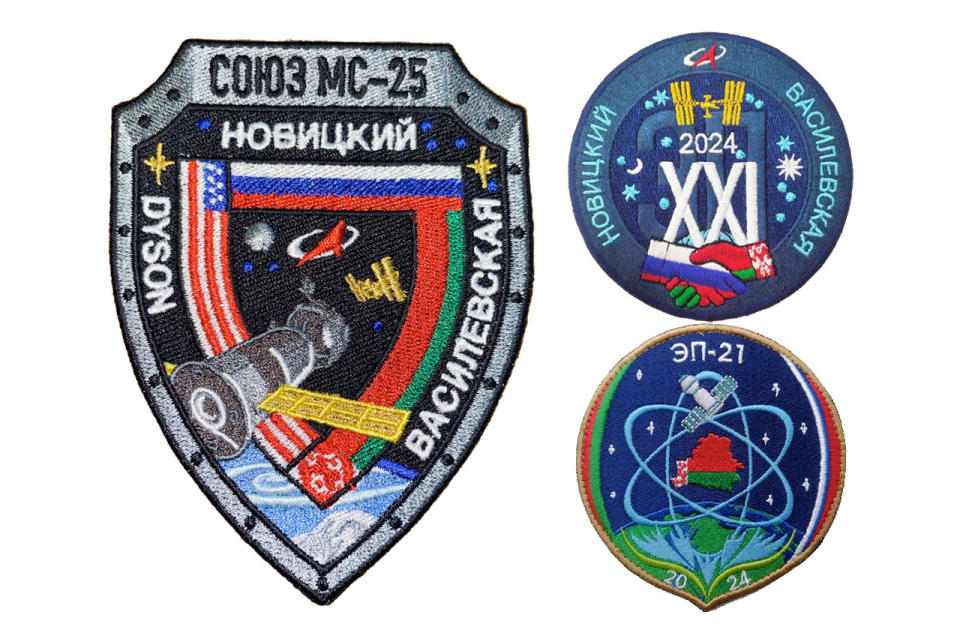For the first time, a spacecraft has taken off with a flight attendant on board, but there will be no drink service during the flight.
Marina Vasilevskaya, who also served as a flight instructor for Belavia Airlines in her native Belarus, traded her flight attendant uniform for a Russian Sokol pressure suit to become the first Belarusian woman to fly into space. On Saturday (March 23), she launched the Russian Soyuz MS-25 spacecraft with cosmonaut Oleg Novitsky of Roscosmos and NASA astronaut Tracy Caldwell Dyson on a mission to the International Space Station.
“It is a great honor and a great responsibility for me to be in this incredible mission,” Vasilevskaya said before going to the launch pad. “This is our national project. It is a great honor. I am so proud to represent our republic.”
The three colleagues left Pad 31/6 at the Baikonur Cosmodrome in Kazakstan at 8:36 am EDT (1236 GMT or 4:36 pm local time) riding atop a Soyuz-2.1a rocket. It was their second attempt at launching into space after a low-voltage warning from a piece of ground support equipment halted the countdown on Thursday.
Nine minutes into the flight, a small figure of “Sharik,” the black and white puppy from the Soviet-era cartoon “A Kitten Named Woof,” began to float attached to a tether.
The toy, or “zero-g indicator,” signaled that Novitsky, Dyson and Vasilevskaya had entered Earth’s orbit. The Soyuz was now on track to dock independently with the station after circling the planet 34 hours. The two spacecraft are scheduled to connect using Russia’s Prichal node at 11:09 a.m. EDT (1509 GMT) on Monday.
Related: International Space Station: Everything you need to know about the orbiting laboratory

Once aboard the station, Novitsky, Dyson and Vasilevskaya will be greeted by Expedition 70 commander Oleg Kononenko and cosmonauts Nikolai Chub and Alexander Grebenkin from Roscosmos and NASA astronauts Loral O’Hara, Matthew Dominick and Jeanette Epps. Dyson will join the resident crew, serving as a flight engineer, over the next six months.


Novitskiy and Vasilevskaya will be aboard the station for about 12 days, after which they will return to Earth with O’Hara on Soyuz MS-24. The trio will leave the orbiting laboratory for a landing on the Kazakh steppe on April 6.
To enable Vasilevskaya’s brief visit as a spaceflight participant, Kononenko and Chub will remain on the station for another six months. After a year-long wait, they will arrive home with Dyson on Soyuz MS-25 in September.


Vasilevskaya, 33, was selected to fly by the Belarusian Academy of Sciences and the Belarusian Space Agency through a national competition. She was one of six finalists from a pool of more than 3,000 female applicants and was eventually chosen over another flight attendant, two scientists and two doctors. Anastasia Lenkova, a 28-year-old pediatric surgeon, was named as Vasilevskaya’s backup.
“Her work ethic is remarkable,” said Dyson of Vasilevskaya in an interview with collectSPACE.com. “She’s a flight attendant. That’s her day job and, as you know, flight attendants don’t just serve drinks. They’re primarily responsible for our personal safety on board the aircraft so she’s no stranger to emergency situations and what to do. and how to stay calm during them. She has shown that she really enjoyed working with us in our sims and training together, especially those involving putting masks on our heads and changing from one suit to another.”
“She’s really up to whatever role she’s been given and what she doesn’t have as a cosmonaut she makes up for with a great attitude,” Dyson said.
Before starting Boeing and Embraer aircraft for Vasilev, Vasilevskaya spent 15 years competing as a professional ballroom dancer. She is the first citizen of the Republic of Belarus to reach space. Pyotr Klimuk and Vladimir Kovalyonok, both from the former Belarusian Soviet Socialist Republic (SSR), preceded him in orbit on their first space flights in 1973 and 1977, respectively.
Novitsky, 52, is making his fourth flight to the space station as commander of Soyuz MS-25. A retired lieutenant colonel in the Russian Air Force, he previously logged more than 531 days in space on his three previous missions in 2013, 2017 and 2021. He joined the Russian cosmonaut corps in 2006.
Dyson, 54, is on her third mission to the space station after a space shuttle visit in 2007 and a long stay in 2010. She has already logged more than 188 days in space. A chemist with a doctorate from the University of California at Davis, Dyson joined NASA with its 17th group of astronauts in 1998.


RELATED STORIES:
— Soyuz spacecraft: the backbone of the Russian space program
— Leaky Soyuz spacecraft at the space station returns to Earth in a fast landing
— Facts and information about Roscosmos, the Russian space agency
Dyson and Vasilevskaya are the first two women to launch together aboard a Russian spacecraft. NASA astronaut Peggy Whitson and South Korean spaceflight participant Soyeon Yi previously landed together aboard Soyuz TMA-11 in 2007.
MS-25 is the 71st Russian Soyuz to launch to the International Space Station since 2000 and the 154th to fly since 1967.
Continue collectSPACE.com on Facebook and on Twitter at @collect SPACE. Copyright 2024 collectSPACE.com. All rights reserved.